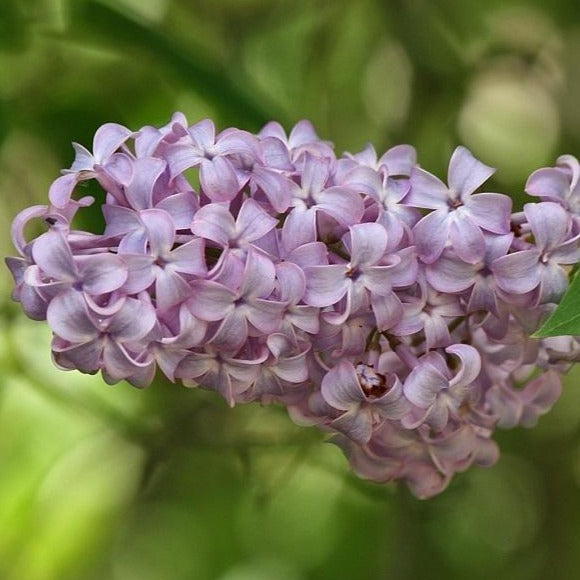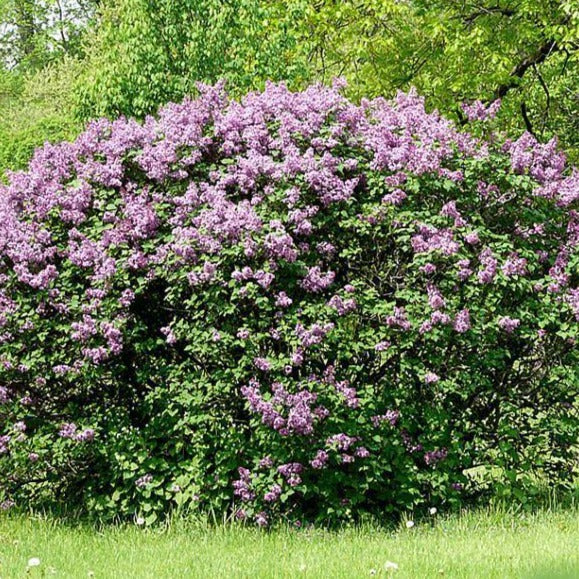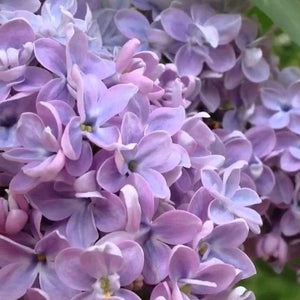Common Lilac
Product Details
 Growing Zones 3-7
Growing Zones 3-7
| Soil Type | Adaptable, Well Drained |
| Sunlight | Full, Partial |
| Drought Tolerance | Good |
| Mature Height | 10-15 Feet |
| Mature Width | 6-10 Feet |
| Growth Rate | moderate |
| Fall Color | Yellow |
| Bloom Color | Purple |
| Shipping Restriction | AZ |
You can't go wrong with this beloved old-fashioned gem! The Common Lilac is widely known for its beautiful and fragrant purple flowers.
This popular plant boasts showy, purple bloom clusters in spring that are hard to miss. The green leaves create a lovely backdrop for the prized, fragrant flowers. The foliage is lush and attractive. The Common Lilac grows to be quite large at maturity. Prepare for a 12 feet tall and 8 feet wide beauty!
This Lilac is easy to care for, fire retardant, and even tolerant to pollution. Lilacs thrive in full sun and fertile, well-drained soil.
The more you have the more fragrance, color, and beauty you bring to your yard and the more hummingbirds and butterflies you'll see! The flowers of the Common Lilac are ideal for cutting so feel free bring the stunning scented blooms inside!
You'll love having your very own Common Lilac! Order yours today!
Where Should I Plant A Common Lilac?
This shrub is adaptable and thrives in grow zones 3-7 with well drained soil and full sun to part shade conditions. Space 5 feet apart if planting more than 1 to accomodate a 6-8 foot spread.
What Are Good Companion Plants For This Lilac?
Clematis, tulpis and peonies grow well and look great when paired with this lilac. These shrubs make a great focal point in the garden and can be used as border plants that will attract butterflies.
When Does This Lilac Bloom?
You can expect beautiful purple blooms in late May with the common variety. Be sure to plant in the right place and prune at the right time to ensure healthy blooms.
Avoid diseases and pests by providing the ideal environment for your plant to thrive. Not many pests bother this lilac. However watch out for Scale and Borers. Scale is an insect seen on the underside of leaves, stems, and branches. They may look cottony or waxy and move slowly or not at all. These insects are parasitic so they can be a problem if they become abundant. They can be treated with neem oil. Be sure to thoroughly cover the entire plant and apply multiple doses. If you see holes in the stems of your plant you have Borers. These are generally hard to treat without pruning the plant back as they live inside the plant. However, natural pesticide, Bacillus thuringiensis can be an effective treatment. Avoid fungus issues by watering at the base of your plant rather than over the leaves.
Planting your lilac: Find a nice sunny spot to plant your lilac. Dig a hole 1½ times bigger than the pot. Gently remove the plant from the pot and pull apart the roots a little bit at the bottom and sides. Place your Lilac bush inside the hole, ensuring that the root ball is level with the surrounding surface. Tamp the soil in place to remove any oxygen bubbles and water it thoroughly.












